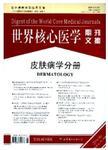从认知正常转变为轻度认知损害和痴呆的危险因素
Risk factors for transitions from normal to mild cognitive impairment and dementia作者机构:University of Kentucky Medical Center 311 Sanders- Brown Center on Aging 800 S. Limestone St. Lexington KY 40536- 0230 United States Dr.
出 版 物:《世界核心医学期刊文摘(神经病学分册)》 (Digest of the World Core Medical Journals.Clinical Neurology)
年 卷 期:2006年第10期
页 面:43-44页
学科分类:1002[医学-临床医学] 100205[医学-精神病与精神卫生学] 10[医学]
摘 要:Objective: To identify risk factors associated with transitions from, cognitively normal to various forms of mild cognitive impairment (MCI) and then from MCI into early dementia with death as a competing state. Methods: Cognitive assessments from 554 subjects participating in a longitudinal study at the University of Kentucky AD Center were used to classify individuals into one of three transient states at any visit: cognitively normal, amnestic MCI, or mixed MCI. Between visits subjects could die or become demented. A series of polytomous logistic models were used to model transitions among these states over time and to determine how the log odds of these transitions vary with age, education, sex, family history of dementia, and APOE status. Results: Age affects all transitions among transient states as well as those to dementia or death. Presence of at least one apolipoprotein 4 allele affects transitions from cognitively normal into amnestic MCI or into dementia. At most 12 years of education affects transitions into mixed MCI. Transitions do not vary with sex or family history. Conclusion: Aside from age, the usual risk factors associated with conversion from cognitively normal into dementia are likely risk factors for transitions into mild cognitive impairment.




